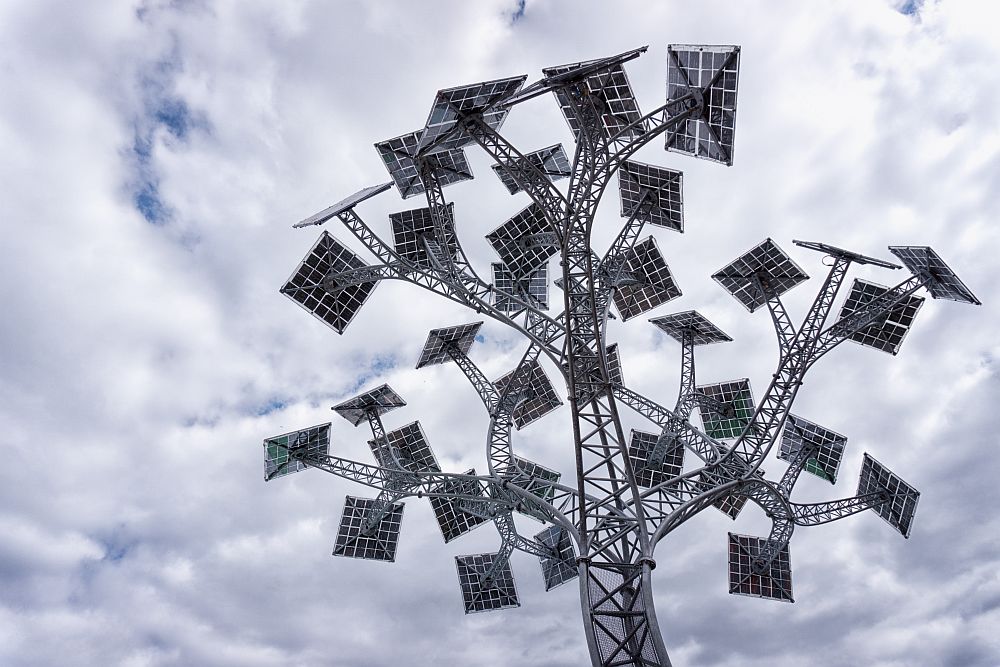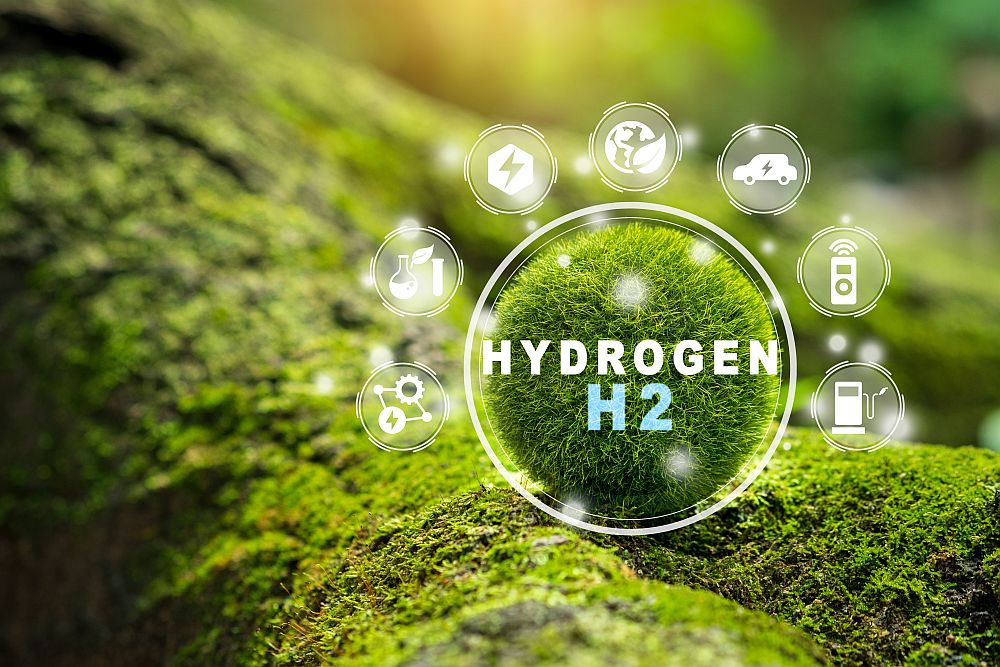
[Image above] Example of a solar tree installed in Bristol, England, that works as a charging station for phones. Credit: Ludovic Farine, Shutterstock
Even in the face of opposition, the solar industry continues to experience substantial growth in the United States and globally, driven by falling production costs and supportive policies. Yet there are still areas for improvement with this rapidly growing technology, particularly concerning how and where it is installed.
Most solar panels currently are installed on roofs because this placement allows existing spaces to be used for energy generation without occupying additional land. But roof-mounted systems alone cannot supply a whole city’s energy needs (well, maybe warehouse roof space can), and so ground-mounted systems help make up the difference by allowing maximized sun exposure and easier maintenance.
Utility-scale ground solar projects can have several unintended negative effects on the soil, however. The heavy machinery used for installation can compact the soil, meaning less water can soak into the ground. This reduced infiltration, in combination with the removal of trees to make room for the panels, can result in increased soil erosion that further reduces vegetative cover, ultimately leading to landslides near solar installations.
Solar installers can take preemptive measures to address these risks, such as by incorporating stormwater management practices into the project during construction. But these challenges also give solar scientists an incentive to design installations that integrate more naturally into the environment, such as the floatovoltaic and agrivoltaic systems covered numerous times on CTT.
Solar trees are another innovative solar installation approach that can mitigate the negative effects on the soil. These ground-mounted solar energy systems are designed to resemble trees, with their “leaves” made of photovoltaic panels to generate electricity. Because their shape mimics that of woody plants, they can be installed in forestry landscapes without requiring deforestation.
Solar trees reputedly first appear in 1998 as a unique sculptural creation in Gleisdorf, Austria. Since then, architects have developed numerous variations of solar trees that even incorporate seating and lighting to serve as symbols of the green energy revolution. The most striking example is CSIR-CMERI’s Solar Power Tree in India. It is the world’s largest solar tree with a 309.83 square meter panel surface area.
Most of these examples are novelties rather than serious solutions to decarbonization. But a recent open-access paper provides more robust support for this technology’s potential on a large scale.
Dan-Bi Um of the Korea Maritime Institute is the paper’s author. They explain that previous studies evaluated individual solar tree performance using point-specific environmental parameters, such as wind speed, temperature, and solar radiation. But this reliance on single-unit performance metrics may “inadequately predict area-wide generation capacity compared to conventional solar installations … [and] may lead to a misinterpretation of the overall energy production of the solar power plant,” they write.
To more accurately determine solar tree project viability, Um simulated and compared the installation capacities of solar trees and flat fixed panels in coastal forest landscapes. They chose this landscape because forests around the coast of Korea have “recently experienced serious damage due to solar power plants.”
“Landslides frequently occur due to soil loss in areas where coastal forests have disappeared. Soil run-off from deforested areas also caused serious pollution problems in rivers, streams, coastal lagoons, beaches, and oceans,” they write.
Simulations were based on Google Earth satellite and 3D imagery of an area in Goseong County, Gangwon Province, Korea. Photomontage techniques were applied to convey the spatial impact of solar panel deployment within the study area, using Adobe Photoshop in conjunction with 3D terrain modeling.
Because solar trees lack standardized protocols for energy production assessment, Um assumed that the solar trees installed in the designated study area shared the same specifications as CSIR-CMERI’s Solar Power Tree—35 solar panels with a combined capacity of 11.5 kW.
The simulation revealed that solar trees can achieve the same installation capacity as the traditional flat fixed panel. Furthermore, “As the power generation performance of the panel improves, the solar tree will be able to secure better installation capacity than the traditional method while occupying a smaller area,” Um writes.
Ultimately, “These findings underscore the importance of selecting solar technologies and spatial arrangements that align with environmental conservation goals, particularly in ecologically sensitive areas such as coastal forests,” Um concludes.
The open-access paper, published in Scientific Reports, is “Superior energy output of solar trees compared to flat fixed panels in coastal forest installations” (DOI: 10.1038/s41598-025-12313-y).
Author
Lisa McDonald
CTT Categories
- Energy


